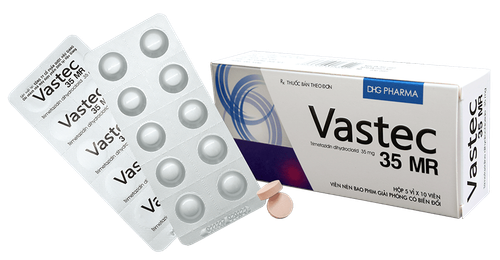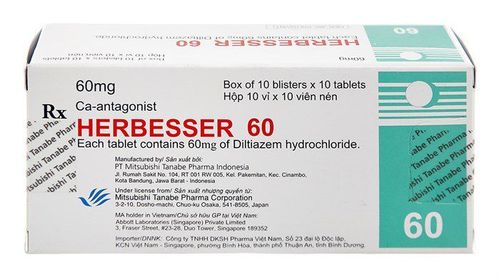This is an automatically translated article.
Pymealong belongs to the group of cardiovascular drugs, in tablet form, packed in a box of 10 blisters x 10 tablets. The drug contains the main ingredient Amlodipine 5mg. Before using Pymealong, patients should consult a pharmacist or specialist. The following is some information to help readers understand what Pymealong is?
1. Indications of the drug Pymealong
Pymealong is indicated in the following cases:
Control of essential hypertension; Treatment of stable angina attacks; Treatment of angina pectoris due to vasoconstriction.
2. Contraindications of Pymealong
Patients should not take Pymealong if:
There is a known hypersensitivity to Amlodipine, dihydropyridine derivatives or to any of the ingredients or excipients of the drug. Pregnant and lactating women.
3. Dosage and how to use Pymealong
Dosage:
For adults:
Treatment of angina and high blood pressure Pymealong starting dose is usually 5mg/time/day. May increase up to a maximum dose of Pymealong of 10 mg depending on patient response. In patients with hepatic impairment, the recommended dose of Pymealong is lower. No dose adjustment of Pymealong is required when co-administered with thiazide diuretics, ACE inhibitors. Usage: Pymealong drug is used orally. The patient should swallow the Pymealong tablet whole. Do not chew, break or crush the medicine because it can increase the side effects when taking.
4. Pymealong drug interactions
Pymealong may have an interaction reaction if used simultaneously with:
Non-steroidal anti-inflammatory drugs; Estrogen; Drugs that stimulate the sympathetic nervous system. To avoid interactions, before being prescribed Pymealong, the patient should inform the doctor about the drugs they are using, including functional foods. The doctor will base on that to prescribe the appropriate Pymealong.
5. Side effects of the drug Pymealong
Pymealong is well tolerated. Active ingredients in Pymealong have a high level of safety and are less likely to have unwanted side effects. However, using Pymealong in high doses or for a long time, can cause unwanted effects such as:
Headache; Edema; Tired; Nausea; Dizzy ; Palpitations ; Ache; Attenuate; Cramps. The side effects of Pymealong are still being analyzed and monitored in patients with the same experimental results. It is not possible to confirm that the above are all effects of Pymealong. However, based on that, patients can prevent dangerous effects caused by side effects.
Patients need to stop using Pymealong as soon as they detect the above side effects or other unusual symptoms. At the same time, quickly notify the treating doctor or immediately go to the nearest medical facility for timely treatment.
6. Pay attention to precautions when using Pymealong
Use caution when using the drug in patients with a history of: Aortic stenosis, liver failure and congestive heart failure. Pymealong does not cross the dialysis membrane. In the event that a dose of Pymealong is missed, it should be supplemented as soon as possible. However, if it is almost time for the next dose, skip the missed dose of Pymealong and use a new dose. When using Pymealong drug overdose, the patient should stop the drug immediately and go to the nearest medical facility for timely treatment. Store Pymealong in a cool, dry place and protected from light. Caution should be exercised when using Pymealong by driving or operating machinery. Absolutely do not use when Pymealong has signs of discoloration, mold, watery or expired. Above is all the information to answer the question "What is Pymealong?". Patients should carefully read the instructions for use, consult a doctor / pharmacist before use. Absolutely do not arbitrarily buy Pymealong for home treatment because there may be unwanted side effects.













